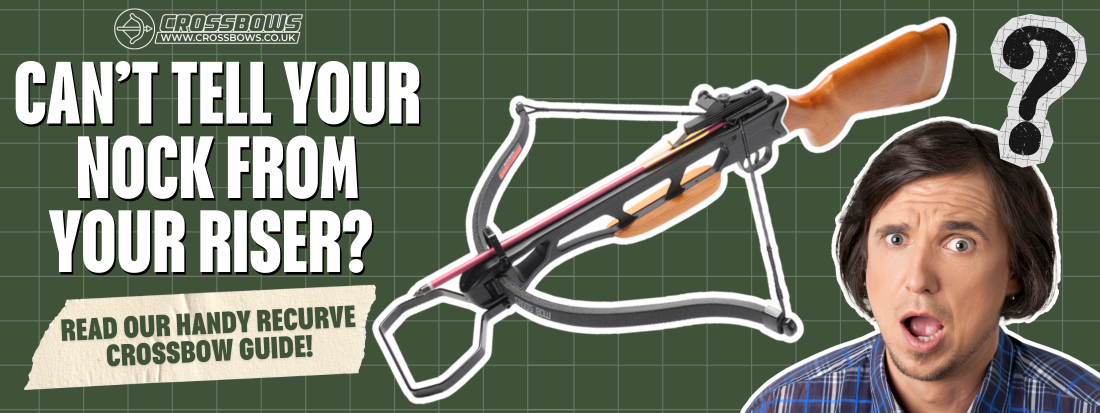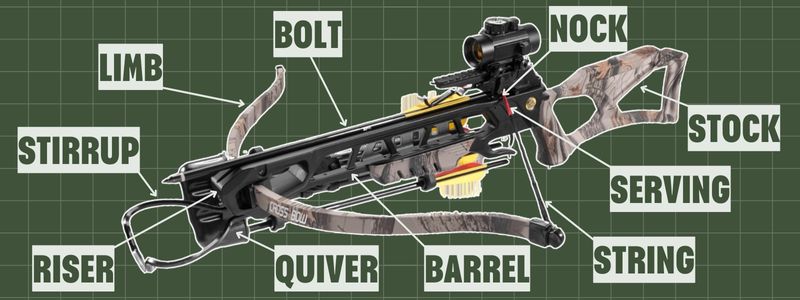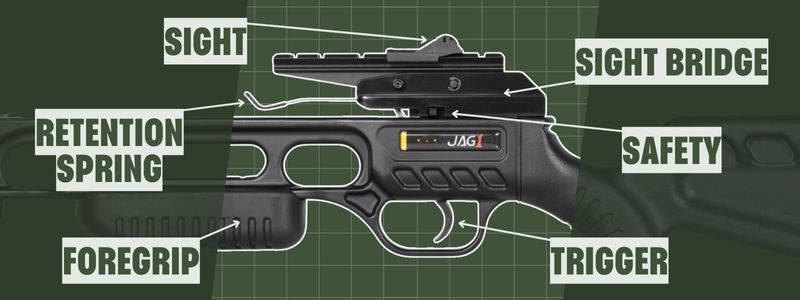Knowledge Base
Understanding the Parts of a Recurve Crossbow: A Complete Guide
If you’re new to the world of crossbows or looking to refresh your knowledge, you’ve come to the right place! In this guide, we’ll break down the essential parts of a recurve crossbow to help you understand what makes it tick. So, let’s dive in and get acquainted with your trusty hunting or target-shooting companion.
The Stock
The stock is the main body of the crossbow, resembling the handle and shoulder rest of a rifle. It’s where you’ll hold and support the crossbow while aiming. Stocks are usually made from durable materials like wood, fiberglass, or composite plastics, providing a sturdy foundation for all other components.
Limbs
The limbs are the flexible extensions attached to the front of the stock. In a recurve crossbow, these limbs curve away from the archer at the tips, storing energy when the bow is drawn. This design allows for a smooth and powerful release, propelling the arrow (or bolt) towards your target.
String
Connecting the tips of the limbs is the string. When you draw the string back, it bends the limbs, storing potential energy. Upon release, this energy converts to kinetic energy, sending the bolt flying. Regular inspection and maintenance of the string are crucial for safety and performance.
Quiver
The quiver is an optional but handy attachment that holds your bolts. Mounted on the crossbow or carried separately, it keeps your ammunition within easy reach, streamlining your shooting experience.
Barrel (Flight Groove)
The barrel, or flight groove, guides the bolt when it’s fired, ensuring it travels straight towards the target. It’s a narrow channel running along the top of the stock. Keeping this area clean and free of debris will help maintain your crossbow’s accuracy.
Stirrup
At the front end of the crossbow, you’ll find the stirrup. This metal loop is where you place your foot to stabilize the crossbow while drawing the string back. It provides leverage, making it easier and safer to cock the bow.
Sight
To improve your aim, most crossbows come equipped with a sight. This could be a simple iron sight, a red dot sight, or even a magnified scope, depending on your preference and shooting needs. Proper alignment and calibration of the sight are essential for hitting your mark consistently.
Trigger Mechanism
The trigger mechanism holds the drawn string in place until you’re ready to shoot. It functions much like a rifle trigger, offering a controlled and smooth release. This component is vital for accuracy, so ensure it’s clean and functioning correctly.
Safety
Last but certainly not least is the safety mechanism. This feature prevents accidental firing by locking the trigger mechanism until you’re ready to shoot. Always engage the safety when loading and handling your crossbow to ensure safe operation.
Conclusion
Understanding the parts of your recurve crossbow not only enhances your appreciation for this remarkable tool but also boosts your confidence and safety while using it. Whether you’re a beginner or a seasoned pro, knowing your equipment inside and out is the first step towards becoming a better archer.
Ready to take the next step? Check out our selection of recurve crossbows and gear up for your next adventure!
At Crossbows.co.uk, we’re passionate about all things crossbow. Browse our BowHow blog for more tips, guides, and the latest news in the crossbow community.



